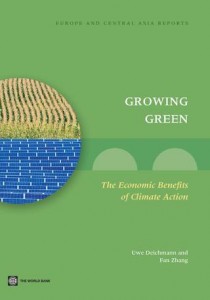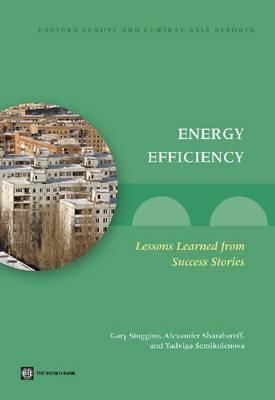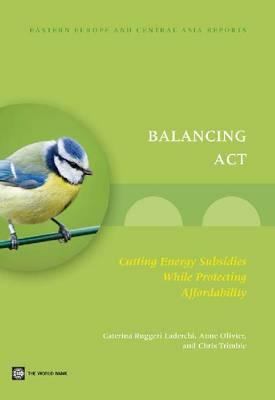 BRUSSELS, June 25, 2013—The economic costs and social impacts of climate change threaten the prosperity of the Europe and Central Asia region. But well-designed climate action can bring numerous benefits, while also being cost-effective. A set of three World Bank reports launched with the European Commission, focus on the ‘here and now’ of policies to fight climate change.
BRUSSELS, June 25, 2013—The economic costs and social impacts of climate change threaten the prosperity of the Europe and Central Asia region. But well-designed climate action can bring numerous benefits, while also being cost-effective. A set of three World Bank reports launched with the European Commission, focus on the ‘here and now’ of policies to fight climate change.
In 2010, a heat wave in Russia may have contributed to more than 50,000 deaths. In 2012, droughts destroyed over 50 per cent of crops in Kazakhstan, 25 per cent in Russia, and 20 per cent in Ukraine. These weather events have been linked to climate change and are expected to occur more frequently in the future.
In recent years, some countries in the Europe and Central Asia region have been slow to respond to this challenge. The region remains the most energy-intensive in the world – using 50 per cent more energy per unit of output than the global average. Fossil fuels comprise 88 per cent of the energy supply in Europe and Central Asia. In fact, coal is the leading fuel for power generation even in Bulgaria, the Czech Republic, and Poland, countries bound by the EU’s 2020 target to reduce carbon emissions by 20 per cent from 1990 levels.
“The region has an opportunity to use this decade to move from ‘brown’ to ‘green’ growth, make production and consumption more sustainable, improve quality of life, and reduce impacts on the climate,” stressed Uwe Deichmann, World Bank Senior Environmental Specialist, and co-author of the Growing Green: the Economic Benefits of Climate Action report.
World Bank present benefits of climate change strategies
The three new reports identify the local and immediate benefits of climate action. They identify what countries in Europe and Central Asia should be doing, and how they can best do it:
- Growing Green: the Economic Benefits of Climate Action identifies energy efficiency, cleaner energy, and natural resource management as the main components of a growth-friendly climate action strategy, and shows that the biggest gains will come from improving energy efficiency.
- Energy Efficiency: Lessons Learned from Success Stories analyzes the policies of countries in the European Union that have improved energy efficiency the most – Denmark, Germany, Ireland, and Sweden in the west, and Lithuania, Poland, and Romania in Central Europe. The report shows that the quickest gains are in industry, while residential energy efficiency improvements tend to be more difficult.
- Balancing Act: Cutting Energy Subsidies While Protecting Affordability proposes that with well-designed energy tariffs and social protection policies, the fiscal and environmental benefits of eliminating energy subsidies do not have to come at the expense of increased poverty and hardship. It shows that reducing consumption subsidies is possible and the welfare gains can be sizeable.

“Climate change is already happening in the region, as seen in frequent floods, droughts, heat waves, and extensive forest fires in the Balkans, Central Asia, and Russia,” said Laszlo Lovei, Director for Sustainable Development in the World Bank’s Europe and Central Asia region. “Climate action is a priority for the World Bank’s work in Europe and Central Asia. Countries’ climate policies – including those that moderate the costs of climate action for the poor and vulnerable – should prioritize actions that will strengthen competitiveness and promote growth. By prioritizing climate action, countries in the region can ‘grow green’.”
Climate action – an essential pillar of an effective development strategy
Climate action interacts with three important development objectives – economic growth, social inclusion, and environmental sustainability. By focusing on three areas, Growing Green: the Economic Benefits of Climate Action shows that smart climate action can bring numerous benefits and its costs can be contained by:
- Using energy more efficiently.
- Using cleaner energy.
- Managing farms and forests better.
Energy efficiency – a development priority in Europe and Central Asia
Since 1990, the energy intensity of economies has dropped by almost 33 per cent, but the progress has not been uniform. EU12 countries have narrowed the efficiency gap with the EU15 by 70 per cent, while Russia, Ukraine, and Central Asian countries remain among the worst performers in energy efficiency in the world. Analyzing the policies of the most successful countries in Europe, such as Ireland and Denmark, Energy Efficiency: Lessons Learned from Success Stories provides the “how-to” of energy efficiency policies:
- Getting the prices right.
- Coordinating policies, learn, and adjust.
- The quickest wins are in manufacturing.
“Investing in energy efficiency appears to help sustain economic growth in higher income countries – we have seen an interesting relationship between countries that have implemented energy efficiency policy measures well and economic growth, Germany and Sweden being particularly good examples,” said Gary Stuggins, Lead Energy Economist in the World Bank’s Europe and Central Asia region, and author of the Energy Efficiency report. “With this in mind, we are looking at the possibility of a new development paradigm in which the efficient use of energy is used to fuel economic growth by improving competitiveness. The new development paradigm could be one in which leaner, efficient enterprises gain increased market share in a more competitive global economic market by keeping their costs down.”
Cutting energy subsidies – essential, but involves a difficult balancing act
A big rise in residential energy tariffs can hurt the poor and provoke protest, as in Bulgaria and the Kyrgyz Republic. The third report, Balancing Act: Cutting Energy Subsidies While Protecting Affordability, shows that without adequate social protection programs and better housing and energy sector policies, reductions in energy subsidies could increase poverty by 4 percentage points in the former Soviet Union – close to 6 percentage points in some countries – and over 2 percentage points in the EU member states and accession countries.
“Addressing the adverse impacts of subsidy reform does not have to come at a cost to the country,” emphasized Caterina Ruggeri Laderchi, Senior Economist in the World Bank’s Europe and Central Asia region, and author of the Balancing Act report. “’Balancing Act’ shows that compensating poor households for higher energy prices while making small investments in energy efficiency can result in gains of over 1 percent of GDP for half of the countries in the region.”
The main steps:
- Strengthen targeted social safety nets immediately.
- Reduce untargeted energy subsidies more gradually, giving households time to adjust.
- Support household energy efficiency improvements over the longer term.
